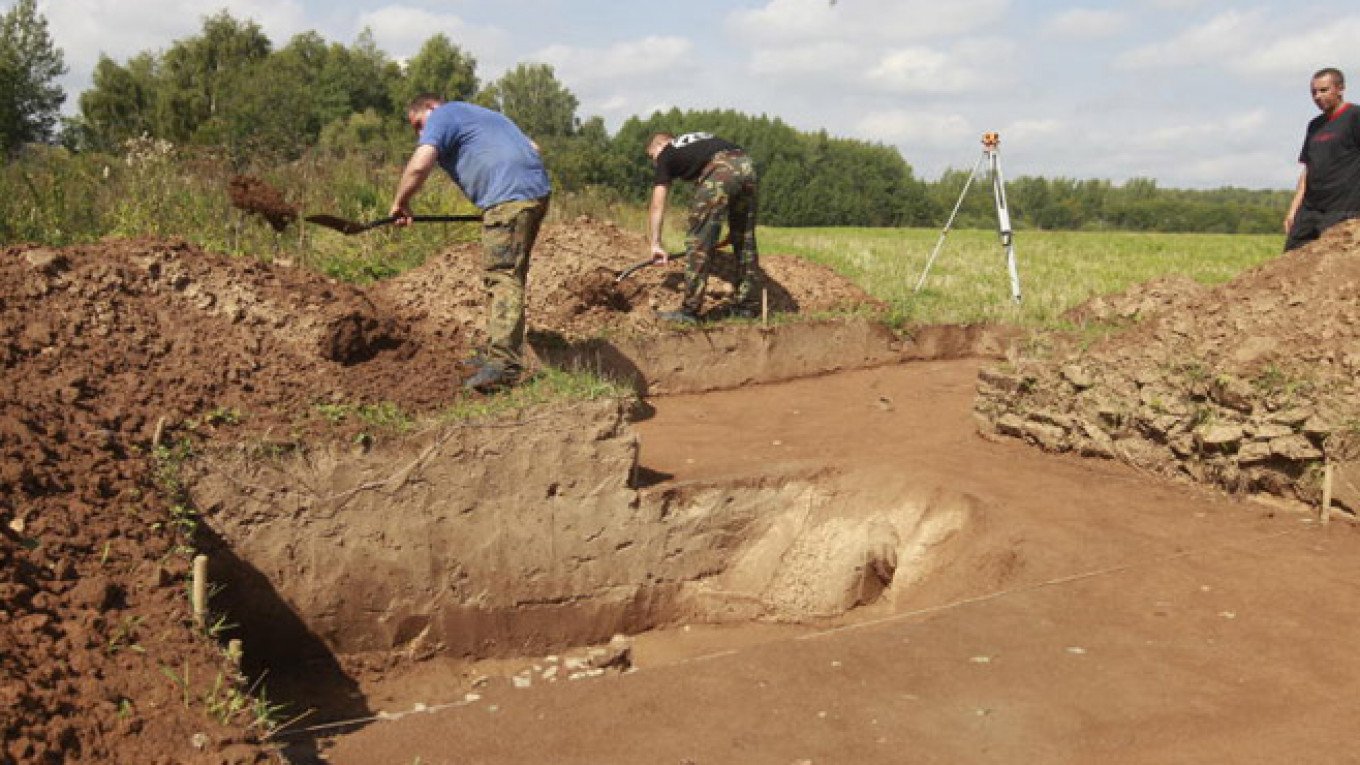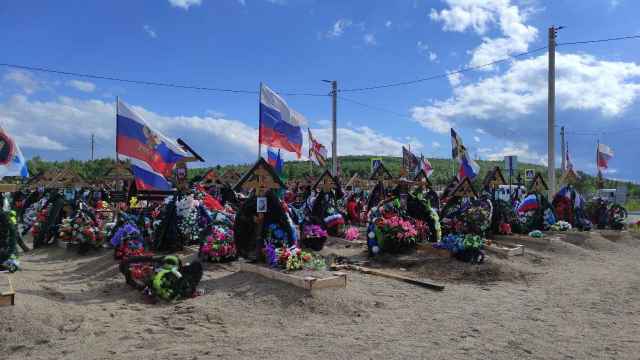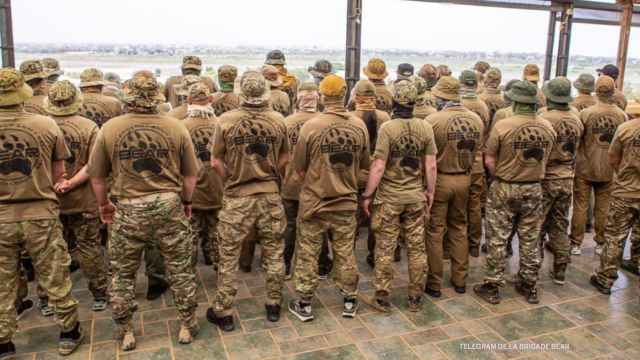Archeologists appear to have discovered a forgotten legend in western Siberia, where they unearthed a uniquely preserved burial site for a mighty warrior slain in battle.
The body was discovered in a mound in the Omsk region dating back to the 11th or 12th century, local news site Omskinform.ru reported Thursday, citing archeologists.
When he died at about 40, the recently unearthed man stood at 1.8 meters tall — 25 centimeters above the average height of his descendants, the indigenous Khanty and Mansi peoples.
His right shoulder was smashed and his left arm severed, evidently in battle. The arm was preserved and buried alongside him.
The warrior was buried with a mask on his face, complete with a bear claw above the nose, as well as bronze tools and 25 war arrows — many of which were still sharp when discovered by archaeologists.
The unnamed giant was likely a warlord trained since childhood for a life of combat, Rossiiskaya Gazeta reported, also citing archeologists.
The man's killers remain a mystery. The Ugric nations of Khanty and Mansi lacked a writing system until the 1930s.
Though Siberia was mostly colonized by the Russian Empire between the 16th and 18th centuries, its indigenous tribes offered more resistance than is commonly known.
The Chukchi people in the far-eastern tundra on the shores of the Arctic and the northern Pacific defied conquest for 150 years and were ultimately subdued through negotiations, not military effort.
And the Khanty, along with the neighboring Nenets, led one of the few ethnic uprisings against the Bolsheviks between 1931 and 1934, protesting the destruction of their traditional way of life.
With shamans encouraging their fight against the Bolsheviks, the rebels — numbering no more than 150 — resisted submission for three years in the harsh conditions of the tundra.
See also:
U.S. World War II Bomber Found in Siberia
Mystery Behind Giant Hole in Siberia Clearer as 2nd Discovered
Contact the author at a.eremenko@imedia.ru
A Message from The Moscow Times:
Dear readers,
We are facing unprecedented challenges. Russia's Prosecutor General's Office has designated The Moscow Times as an "undesirable" organization, criminalizing our work and putting our staff at risk of prosecution. This follows our earlier unjust labeling as a "foreign agent."
These actions are direct attempts to silence independent journalism in Russia. The authorities claim our work "discredits the decisions of the Russian leadership." We see things differently: we strive to provide accurate, unbiased reporting on Russia.
We, the journalists of The Moscow Times, refuse to be silenced. But to continue our work, we need your help.
Your support, no matter how small, makes a world of difference. If you can, please support us monthly starting from just $2. It's quick to set up, and every contribution makes a significant impact.
By supporting The Moscow Times, you're defending open, independent journalism in the face of repression. Thank you for standing with us.
Remind me later.








